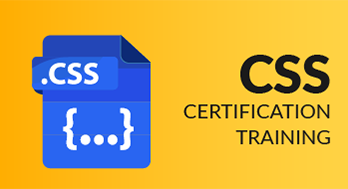In the world of engineering and construction, piping systems are the circulatory systems of any industrial plant. They transport fluids, gases, and other essential materials, ensuring the smooth operation of a wide range of processes. The design and layout of these systems are critical for safety, efficiency, and functionality. To ensure that piping systems are designed and engineered to the highest standards, professional piping designer certification has become an invaluable asset for individuals in the field.
This article explores the world of professional piping designer certification, providing insight into its significance, the skills and knowledge it encompasses, the certification process, and the potential career benefits it offers. Whether you are a seasoned engineer looking to enhance your skills or a newcomer seeking a career in piping design, this guide will shed light on this essential aspect of the industry.
The Significance of Piping Design
Piping design plays a pivotal role in the success of any industrial project. Inaccurate or inefficient designs can lead to operational failures, safety hazards, and substantial financial losses. The responsibilities of a piping designer encompass the planning, layout, and detailing of the piping systems, including the selection of materials, support structures, and routing of pipelines within a facility. Piping designers must adhere to various industry standards and regulations to ensure that their designs meet the necessary safety and performance criteria.
In this context, professional piping designers are in high demand across industries such as oil and gas, petrochemicals, power generation, pharmaceuticals, and more. Their work directly influences the productivity, safety, and profitability of organizations, making their role both challenging and crucial.
Skills and Knowledge Required
Professional piping designers are expected to possess a wide range of skills and knowledge to excel in their roles. These include:
- Engineering Principles: Piping designers must have a strong grasp of engineering fundamentals, including mechanics, thermodynamics, fluid dynamics, and heat transfer. Understanding these principles is essential for designing piping systems that function optimally and safely.
- CAD (Computer-Aided Design) Software: Proficiency in CAD software, particularly those designed for piping design such as AutoCAD, AutoCAD Plant 3D, and SolidWorks, is essential. These tools allow designers to create accurate 2D and 3D representations of piping systems.
- Piping Codes and Standards: A deep knowledge of industry-specific codes and standards is crucial. These regulations govern the design, fabrication, and installation of piping systems to ensure they meet safety and quality requirements.
- Material Selection: Piping designers must be well-versed in selecting appropriate materials for different applications. This involves considering factors such as fluid properties, temperature, pressure, and corrosion resistance.
- Project Management: Piping designers often work as part of larger project teams. Understanding project management concepts and collaborating effectively with other professionals, including engineers, architects, and project managers, is vital.
- Communication Skills: Clear communication is essential in this field. Piping designers need to effectively convey their ideas and designs to both technical and non-technical stakeholders.
- Safety Regulations: Comprehending safety regulations and best practices is paramount in preventing accidents and ensuring the wellbeing of personnel working with the piping systems.
Certification Process
Professional piping designer certification programs aim to validate the skills and knowledge mentioned above. Several organizations offer certification in piping design, with two of the most prominent ones being the American Society of Mechanical Engineers (ASME) and the American Society of Plumbing Engineers (ASPE). Below is a general overview of the certification process:
- Eligibility: Each certifying body has its own eligibility requirements, but generally, applicants need a minimum level of education and experience in piping design. For example, ASME’s B31.3 Process Piping certification requires a minimum of 5 years of relevant experience.
- Preparation: Candidates typically undertake preparation courses or self-study to prepare for the certification exam. These courses cover the essential topics and provide practice exams to assess readiness.
- Examination: The certification examination is a comprehensive test that assesses knowledge, problem-solving skills, and practical application in piping design. The format and content of the exam vary depending on the certifying body.
- Continuing Education: After obtaining certification, professionals are often required to engage in continuing education to keep their knowledge and skills up-to-date.
Career Benefits
Earning a professional piping designer certification offers several advantages, both in terms of career opportunities and personal development:
- Increased Employability: Certified piping designers are more attractive to employers as their certification demonstrates a commitment to excellence and adherence to industry standards.
- Higher Earning Potential: Certification often leads to higher salaries. Employers are willing to pay more for professionals with specialized knowledge and skills.
- Career Advancement: Certification opens doors to leadership and management roles within the field. It can also provide opportunities for specialization in specific industries or aspects of piping design.
- Global Recognition: Certifications like those from ASME and ASPE are recognized worldwide. This means that certified professionals can work on projects in various countries and regions.
- Personal Satisfaction: Achieving certification is a significant personal accomplishment and can boost self-esteem and confidence.
Real-Life Success Story
To illustrate the impact of professional piping designer certification, we can look at the journey of Sarah Thompson, a certified piping designer with extensive experience in the petrochemical industry. Sarah’s career path and achievements are a testament to the value of certification.
Early Career: Sarah started her career as a draftsman in a small engineering firm. However, she was determined to advance her career and work on more complex projects. She enrolled in a certification program and, after years of hard work, earned her ASME B31.3 Process Piping certification.
Career Advancement: With her certification in hand, Sarah secured a position as a lead piping designer at a major petrochemical company. Her expertise in compliance with industry standards and her ability to work with advanced CAD software made her an invaluable asset to the company.
Global Opportunities: Sarah’s certification opened doors to international opportunities. She was selected to work on a large-scale petrochemical project in the Middle East. Her certification ensured that the project adhered to international standards and regulations.
Mentoring and Training: Over the years, Sarah has become a mentor to junior piping designers. She has also contributed to the development of in-house training programs. Her certification and expertise have made her a sought-after expert in the field.
Also Read: Activities Professional Certification
Conclusion
Professional piping designer certification is a powerful tool for individuals seeking excellence in the field of piping design. It not only enhances one’s knowledge and skills but also opens doors to better career opportunities and personal growth. As industries continue to demand high-quality piping systems that meet safety and performance standards, certified professionals are at the forefront of creating a better, safer world.
Whether you are an aspiring piping designer or a seasoned professional looking to take your career to the next level, consider investing in a certification program. The journey to certification is challenging, but the rewards in terms of career advancement and personal fulfillment are immeasurable. Embrace the opportunity to make a lasting impact on the world of engineering and construction through professional piping designer certification.




